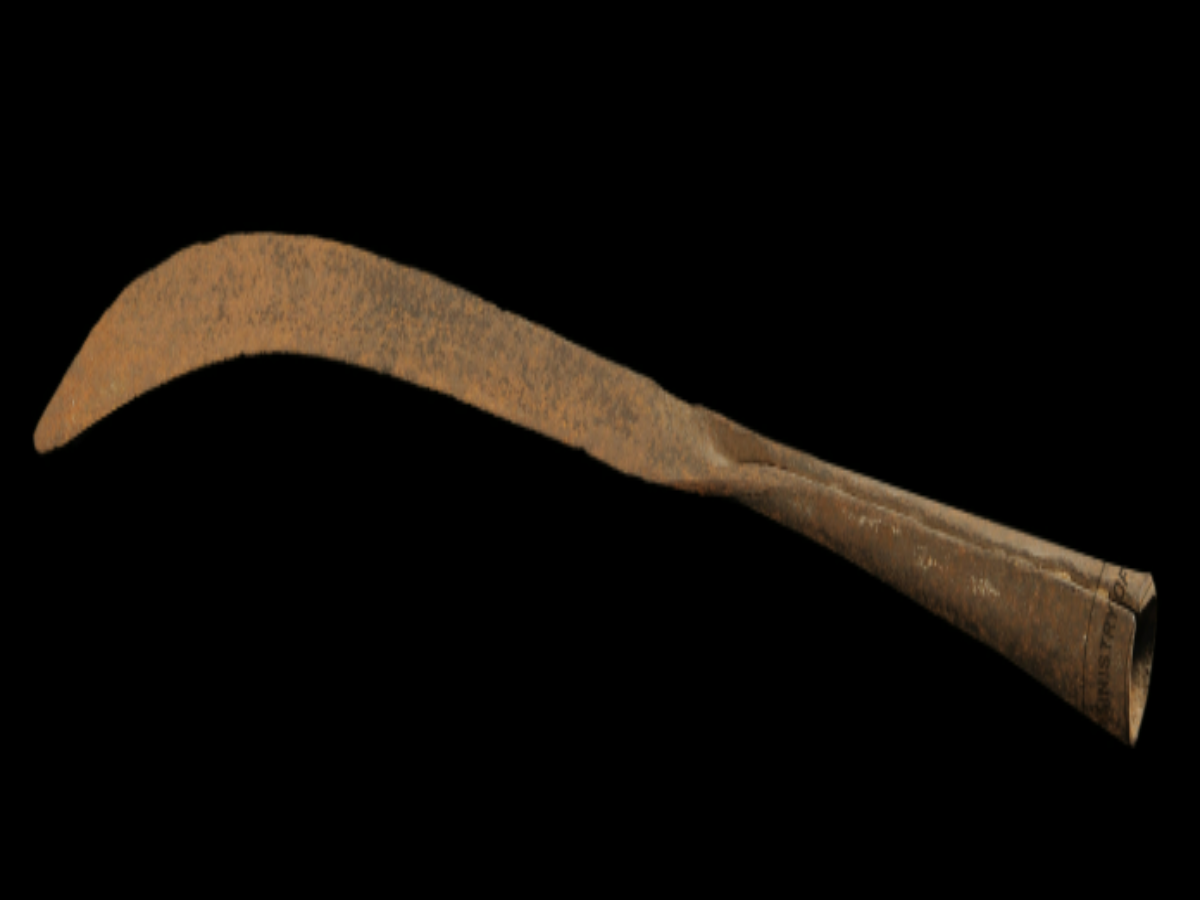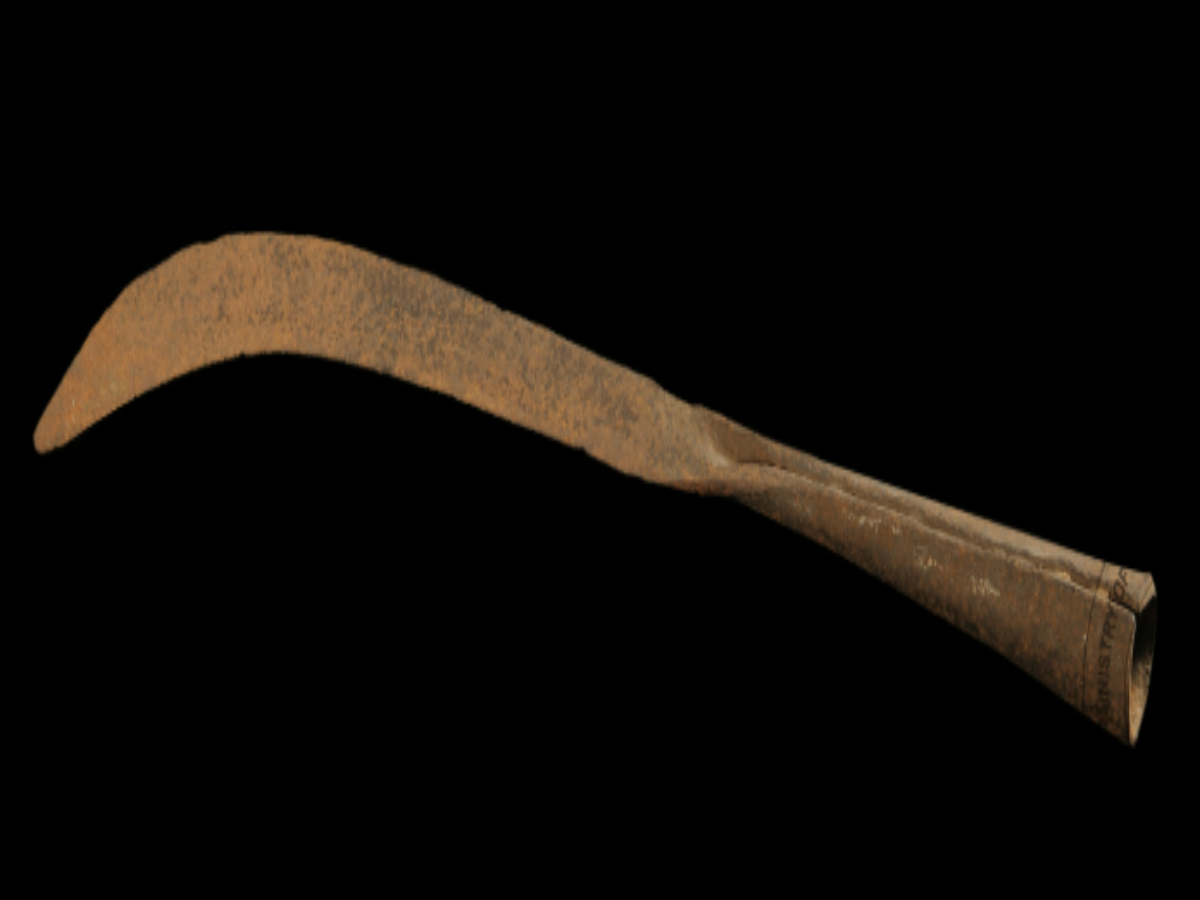State
Tribe Name
Art Type
short description
Konyak Naga people inhabit the northernmost district of Nagaland, encountered in Mon district. These people have a great history of being warriors, extremely intricate works in wood, and strong craftsmen. Iron sickles are amongst the traditional instruments still in use among the Konyak Naga and are essential to facilitating farming as well as domestic activities; this simple multipurpose tool embodies the tribe's close association with the land and their expertise in ironworking. A traditional Konyak sickle is wrought from one long piece of iron plate, truly a testament to their age-old blacksmithing skills. The sickle consists of two important parts: the handle and the cutting edge. In a special way, the handle is not separate but one projection of the lower part of the blade itself, smoothly bent or shaped for gripping and balancing. It makes the tool strong and durable with repeated ues.
Thumbnail

Filter Postion
Left
Filter Background
Off
Theme
Filter Header Image

content
Image

description
Konyak Naga people inhabit the northernmost district of Nagaland, encountered in Mon district. These people have a great history of being warriors, extremely intricate works in wood, and strong craftsmen. Iron sickles are amongst the traditional instruments still in use among the Konyak Naga and are essential to facilitating farming as well as domestic activities; this simple multipurpose tool embodies the tribe's close association with the land and their expertise in ironworking. A traditional Konyak sickle is wrought from one long piece of iron plate, truly a testament to their age-old blacksmithing skills. The sickle consists of two important parts: the handle and the cutting edge. In a special way, the handle is not separate but one projection of the lower part of the blade itself, smoothly bent or shaped for gripping and balancing. It makes the tool strong and durable with repeated ues.
Its cutting edge is crescent shaped, therefore ideal for harvesting crops, cutting grasses, and gathering forest produce. The curved blade lends itself to efficient slicing movements, thus making it one of the indispensables in the day-to-day lives of Konyak farmers. But the sickle is more than just a farming tool; it is a metaphor for self-this reliance and survival, as well as the agricultural heritage of the tribe. The sickle, along with other agricultural tools, is worshiped during the rites of several traditional celebrations. This also indicates the interwoven relationship of utility, craftsmanship, and cultural identity behind tribal material culture.
Its cutting edge is crescent shaped, therefore ideal for harvesting crops, cutting grasses, and gathering forest produce. The curved blade lends itself to efficient slicing movements, thus making it one of the indispensables in the day-to-day lives of Konyak farmers. But the sickle is more than just a farming tool; it is a metaphor for self-this reliance and survival, as well as the agricultural heritage of the tribe. The sickle, along with other agricultural tools, is worshiped during the rites of several traditional celebrations. This also indicates the interwoven relationship of utility, craftsmanship, and cultural identity behind tribal material culture.
Image Mode
landscape
promoted
On
Verified
Off
